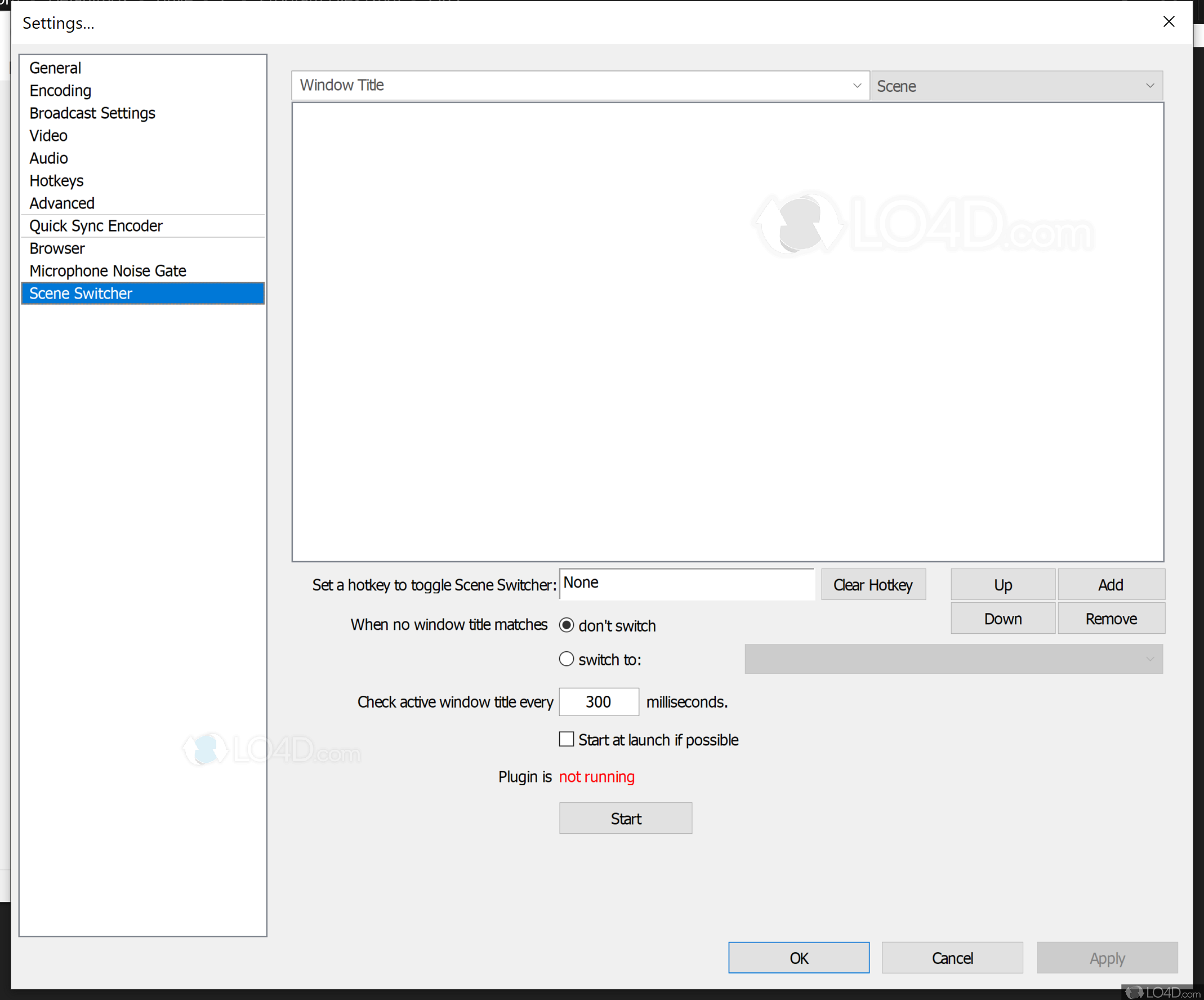

With that, it’s time to set your bit rate. While this may be less strain on your bandwidth (the bit rate will drop when there is less movement happening), it can create a lot of bit rate spikes that may negatively impact the viewing experience. The other option is going for a variable bit rate by leaving “Use CBR” unchecked and using the “Quality Balance”. This results in a stream that has consistent quality that in many cases, is easier for your viewers to watch. By enabling these you are ensuring your stream will go out at the bitrate you specify. From here, check the boxes next to “Use CBR” and “Enable CBR padding”.ĬBR stands for constant bitrate. Firstly, make sure you have the x264 encoder selected. To start things off we’ll take a look at the Encoding section. You can also create profiles, ensuring that setting management between different users is easy. Not a lot is going on in the General settings, but if you want to run OBS in a different language this is the place to be. After you’ve followed this guide and got your stream running you don’t need to worry about most of these things or grasp them at any deeper level. There’s going to be a lot of technical jargon going ahead, do not let that scare you away.

Everything covered here takes into consideration your viewers in order to provide the best quality to as many people as possible. Our first step towards a highly accessible streaming setup will be going through and (partially) understanding all the various features you’ll find in OBS, starting off with the settings. Twitch’s emphasis on accessibility is great news for smaller streamers that are just getting started! To improve accessibility site wide, Twitch is rolling out these options out to more and more streamers as they increase their capacity to do so. Until recently, the option for the viewer to change the quality settings was unavailable on unpartnered streams. Twitch has 5 different quality settings, starting with Source and followed in order by High, Medium, Low, and Mobile. Putting together a stream that caters to both accessibility and quality is your ultimate goal. As the streamer, this means your stream is available to more people and potentially opening the flood gates of viewership numbers! They, your viewers, are the most important factor you need to consider. For the end user, this means having the ability to comfortably watch a stream at the quality you want. Let this be a mantra remaining at the forefront of your thoughts as you setup your stream. You can find a recap of our most crucial setting recommendations at the bottom of this guide!Īccessibility.

#Obs classic vs studio professional
There is a range of other options when it comes to streaming, but we have chosen OBS as it is readily available and used by everyone from home-based amateurs to professional production studios. As of today, OBS Classic is no longer supported by various notifications websites and we suggest using OBS Studio, which is also free! You can find OBS Studio here!
#Obs classic vs studio software
The streaming software we have chosen to cover in this article is Open Broadcast Software (OBS) Classic, which can be downloaded by following this link, as it is open source and available for free.
#Obs classic vs studio series
This stream guide is the first in a two part series that will help you set up your own stream with the correct settings and a basic layout. I has rapidly become the go to entertainment for many and with large companies such as Amazon and YouTube investing in it, the future is bright. Streaming is home to lets plays, Esports, talk shows, creative streams, and much, much more. Twitch boasts an impressive 9.7 million daily active users with over 2 million unique streamers per month and has established itself as a source of income for content creators and personalities. Streaming is quickly becoming a huge source of entertainment and a great way to build a community around and with others that share the same passion as you. However, other than a few notification websites, OBS Classic can still stream to all major streaming websites:, Beam.pro,, and.

Although this was recently posted, it is a tutorial using the OBS that is no longer being updated or supported. Tweet to great step by step tutorial we found at the ubi forums.


 0 kommentar(er)
0 kommentar(er)
